BYD Sealion 7 review, cost: New EV to spark Aussie price war
The latest EV from China is set for its Aussie launch, with the brand making no attempt to hide its bid to wage war against established brands.
There’s no shortage of expensive electric SUVs, but BYD is determined the upcoming Sealion 7 won’t be one of them when it hits the market early in 2025.
The ambitious Chinese brand that says it will soon overtake Toyota in sales wants to reshape the SUV market with its new Sealion 7. The soon-to-arrive mid-sized five-seater lines up head-to-head with the Tesla Model Y, the top selling EV on the market.
At the launch of the car in Adelaide on Wednesday, BYD indicated that when it hits Aussie showrooms, the Sealion 7 will slightly undercut the Model Y’s circa-$61,000 drive-away starting price.
According to BYD, the Sealion 7 base models will cost $54,499 (before on road costs) for the premium RWD and $63990 (before on road costs) for performance AWD.
At that price the Sealion 7 could be a tempting proposition – and one that undercuts the new breed from Zeekr, Xpeng, Smart and others.
It’ll also be trying to tempt people out of regular mid-sized SUVs, including the Toyota RAV4, Mazda CX-5, Honda CR-V, Hyundai Tucson and Kia Sportage.
MORE: Elon Musk’s wild $97B bid
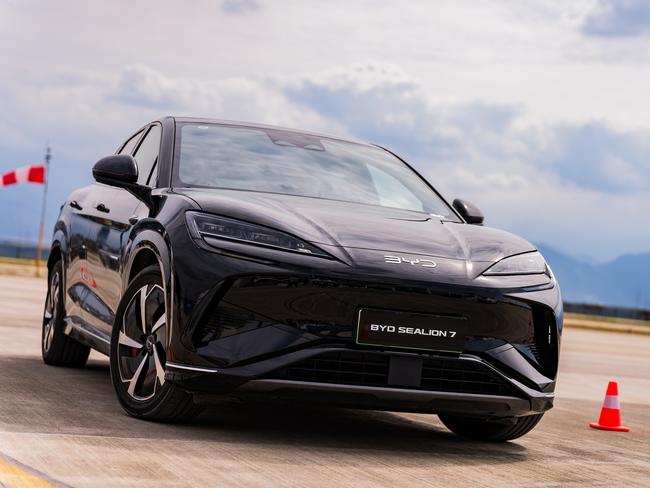
CAN’T SWALLOW AS MUCH AS THE TESLA MODEL Y
While it will wear a similar price tag to the BYD Sealion 6 that is already on sale – which sells from around $54,000 – there is one big difference: the 6 is a plug-in hybrid EV (PHEV) while the 7 is a full battery electric vehicle.
It’ll create an interesting dynamic in dealerships between those who prefer the simplicity and lower running costs of an EV versus the longer distance touring ability of a PHEV.
Inside, the Sealion 7 has a clean, modern cabin.
Stuff that looks like leather is quilted and perforated while satin finishes and stitching across the console and dash add texture to the quality materials. A panoramic sunroof lets the light flood in and those in the back seat have loads of head and legroom. The floating centre console hides a handy storage binnacle and USB ports (there’s also a cooled wireless phone charger in front of the stubby gear selector).
The boot doesn’t look like it’ll swallow as much as a Model Y but there’s additional storage in the frunk under the bonnet. A 60/40 split-folding back seat can expand the load area.
But space is generous in the cabin. Those up front have loads of adjustability, an open feel and generous storage.
MORE: Major change coming to beloved Aussie ute
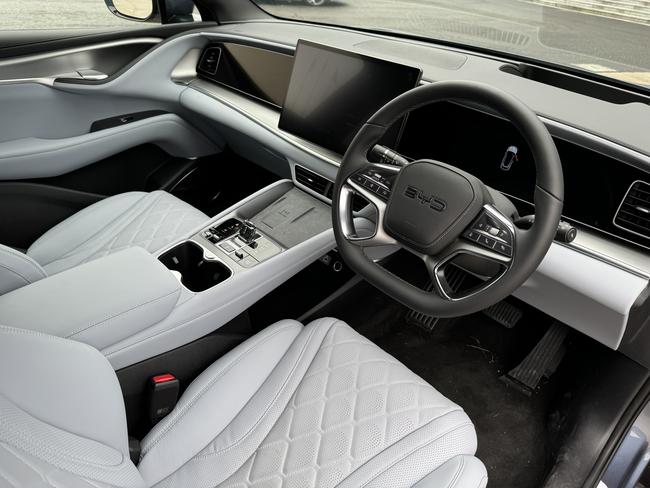
There’s also a digital instrument cluster and larger central infotainment screen that can rotate through 90 degrees to transform from a portrait configuration to landscape. As with all BYDs there’s over-the-air software functionality and the ability to use a smartphone as the key.
In the rear is a surprising amount of space. Taller people will appreciate the headroom while legroom is great, making it easy for adults to get comfy. The Sealion 7 should also come with similar levels of equipment to the Sealion 6.
Think heated, ventilated and power adjustable front seats, available head-up display and a 15.6-inch central infotainment screen with Apple CarPlay and Android Auto.
The Sealion 7 also gets a Dynaudio sound system with boot-mounted subwoofer promises to pump out the tunes.
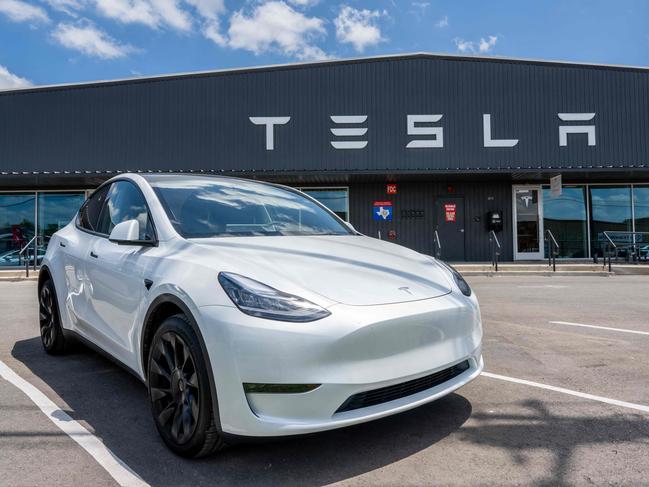
STIFF COMPETITION TO THE TESLA MODEL 3
Beneath the skin the Sealion 7 shares its architecture and electrical system with the Seal mid-sized sedan that has provided the stiffest competition yet to the Tesla Model 3.
That means the choice of a single-motor rear-wheel drive set-up or a dual-motor all-wheel drive.
Single motor models make 170kW or 230kW (the latter with a larger battery) while the dual motor makes a hefty 390kW. We sampled one of the single-motor variants and the dual motor briefly on a recent trip to various BYD facilities in China.
Our drive was limited to a vast open skid pan with witches hats, so was hardly representative of how Aussies will use a mid-sized SUV. But it was enough to learn the Sealion 7 delivers on EV driving ease and isn’t lacking in easily-accessibly performance.
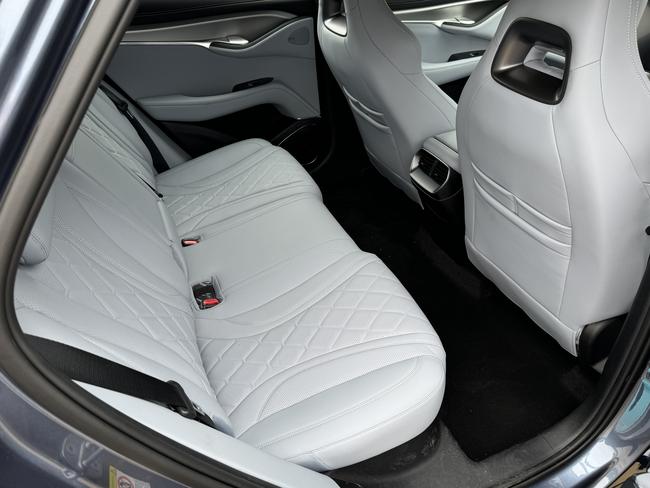
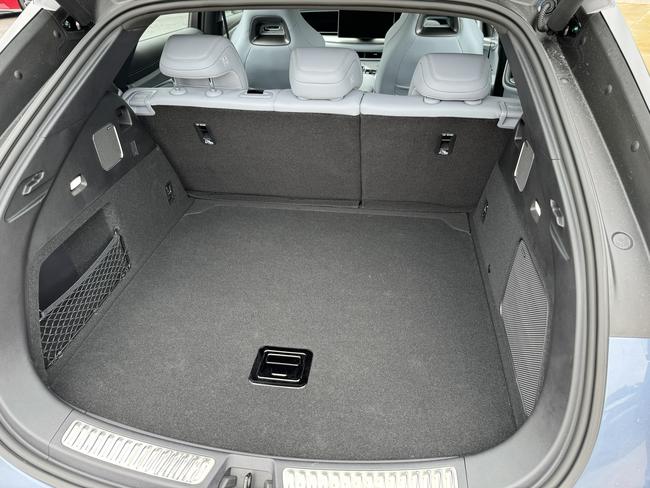
Even in single-motor guise it pulls cleanly and should have enough punch for suburban running. The dual-motor model ramps it up with more firepower off the line. Steering is light and not exactly overloaded with feel, but it’s alert and responsive.
Our car was running on Michelin tyres that provided impressive grip, although again the road surface wasn’t representative of what Aussie councils provide for the school run. But the foundations are there. And if BYD continues to perform local suspension and engineering testing it should help ensure the Sealion 7 can fight with the better mid-sized SUVs on the market.
Arguably, though, the most critical component of the Sealion 7 is its positioning when it arrives here in 2025.
Things are getting busy in the circa-$55K SUV market – whether powered by electric, hybrid or petrol – and it appears pricing will continue to play a crucial role.
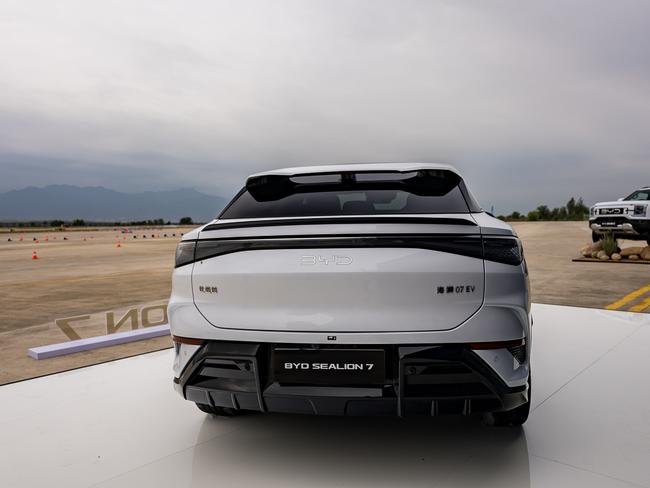
BYD Sealion 7
Price: From about $55,000 drive-away (estimated)
Warranty/servicing: 6 years, 150,000km
Safety: Details to be confirmed
Power: 2.0-litre 4-cylinder turbo and three electric motors, 640kW
Range: 550km-610km (claimed according to the NEDC standard)
Spare: Repair kit
Boot: 558L (boot) 58L (frunk)
Verdict: Impressive electric substance from the Seal in a higher riding SUV package, which if priced sharply could provide serious competition to Tesla
Star rating: 4
Originally published as BYD Sealion 7 review, cost: New EV to spark Aussie price war




